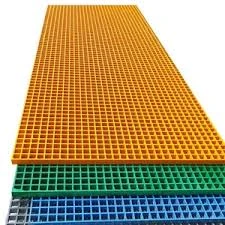
-
 Afrikaans
Afrikaans -
 Albanian
Albanian -
 Amharic
Amharic -
 Arabic
Arabic -
 Armenian
Armenian -
 Azerbaijani
Azerbaijani -
 Basque
Basque -
 Belarusian
Belarusian -
 Bengali
Bengali -
 Bosnian
Bosnian -
 Bulgarian
Bulgarian -
 Catalan
Catalan -
 Cebuano
Cebuano -
 China
China -
 China (Taiwan)
China (Taiwan) -
 Corsican
Corsican -
 Croatian
Croatian -
 Czech
Czech -
 Danish
Danish -
 Dutch
Dutch -
 English
English -
 Esperanto
Esperanto -
 Estonian
Estonian -
 Finnish
Finnish -
 French
French -
 Frisian
Frisian -
 Galician
Galician -
 Georgian
Georgian -
 German
German -
 Greek
Greek -
 Gujarati
Gujarati -
 Haitian Creole
Haitian Creole -
 hausa
hausa -
 hawaiian
hawaiian -
 Hebrew
Hebrew -
 Hindi
Hindi -
 Miao
Miao -
 Hungarian
Hungarian -
 Icelandic
Icelandic -
 igbo
igbo -
 Indonesian
Indonesian -
 irish
irish -
 Italian
Italian -
 Japanese
Japanese -
 Javanese
Javanese -
 Kannada
Kannada -
 kazakh
kazakh -
 Khmer
Khmer -
 Rwandese
Rwandese -
 Korean
Korean -
 Kurdish
Kurdish -
 Kyrgyz
Kyrgyz -
 Lao
Lao -
 Latin
Latin -
 Latvian
Latvian -
 Lithuanian
Lithuanian -
 Luxembourgish
Luxembourgish -
 Macedonian
Macedonian -
 Malgashi
Malgashi -
 Malay
Malay -
 Malayalam
Malayalam -
 Maltese
Maltese -
 Maori
Maori -
 Marathi
Marathi -
 Mongolian
Mongolian -
 Myanmar
Myanmar -
 Nepali
Nepali -
 Norwegian
Norwegian -
 Norwegian
Norwegian -
 Occitan
Occitan -
 Pashto
Pashto -
 Persian
Persian -
 Polish
Polish -
 Portuguese
Portuguese -
 Punjabi
Punjabi -
 Romanian
Romanian -
 Russian
Russian -
 Samoan
Samoan -
 Scottish Gaelic
Scottish Gaelic -
 Serbian
Serbian -
 Sesotho
Sesotho -
 Shona
Shona -
 Sindhi
Sindhi -
 Sinhala
Sinhala -
 Slovak
Slovak -
 Slovenian
Slovenian -
 Somali
Somali -
 Spanish
Spanish -
 Sundanese
Sundanese -
 Swahili
Swahili -
 Swedish
Swedish -
 Tagalog
Tagalog -
 Tajik
Tajik -
 Tamil
Tamil -
 Tatar
Tatar -
 Telugu
Telugu -
 Thai
Thai -
 Turkish
Turkish -
 Turkmen
Turkmen -
 Ukrainian
Ukrainian -
 Urdu
Urdu -
 Uighur
Uighur -
 Uzbek
Uzbek -
 Vietnamese
Vietnamese -
 Welsh
Welsh -
 Bantu
Bantu -
 Yiddish
Yiddish -
 Yoruba
Yoruba -
 Zulu
Zulu
grp car
Exploring the Impact of GRP (Glass Reinforced Plastic) in Modern Automotive Design
In recent years, the automotive industry has witnessed a significant transformation, driven by advancements in materials science. One such material that has gained popularity is Glass Reinforced Plastic (GRP), also known as fiberglass. This composite material, which combines plastic with glass fibers, offers numerous advantages that make it an attractive option for modern automotive design.
.
Moreover, GRP offers exceptional corrosion resistance, a feature that is particularly beneficial for automotive applications. Traditional metals can succumb to rust and corrosion over time, especially when exposed to moisture and harsh environmental conditions. In contrast, GRP's resistance to corrosion ensures that vehicles maintain their aesthetic appeal and structural strength over extended periods. This durability not only translates to longer-lasting vehicles but also reduces maintenance costs for consumers.
grp car

The versatility of GRP also allows for creative design possibilities. It can be molded into complex shapes, enabling automotive designers to break free from traditional forms and explore innovative aesthetics. Whether it’s sleek curves or intricate designs, GRP caters to the aesthetic aspirations of modern car manufacturers, making it easier to produce eye-catching vehicles that capture consumer interest.
Additionally, the production process of GRP can be more environmentally friendly compared to traditional metal forming techniques. The ability to recycle fiberglass materials and reduce waste during production aligns with the industry’s movement towards sustainability. As consumers become increasingly aware of environmental issues, automakers are prompted to adopt greener practices, and GRP provides a viable solution.
However, despite its many advantages, the use of GRP in automotive design is not without challenges. The cost of production can be higher than that of traditional materials, particularly when considering the complexities involved in manufacturing and molding processes. Furthermore, ensuring the material meets safety standards and performance criteria is essential, as any compromise in these areas could lead to diminished consumer confidence.
In conclusion, the integration of Glass Reinforced Plastic (GRP) into the automotive industry exemplifies the innovation and adaptability of materials science. Its lightweight, corrosion-resistant properties, coupled with design versatility, position GRP as a key player in the evolution of vehicle manufacturing. As the industry continues to evolve and push towards sustainability, GRP will likely play an even more significant role in shaping the future of automotive design, creating vehicles that are not only functional and efficient but also visually striking.
Latest news
-
Exploring the Benefits of Top Hammer Drifter Rods for Enhanced Drilling PerformanceNewsJun.10,2025
-
High-Precision Fiberglass Winding Machine for GRP/FRP Pipe Production – Reliable & Efficient SolutionsNewsJun.10,2025
-
FRP Pipes & Fittings for Shipbuilding - Corrosion-Resistant & LightweightNewsJun.09,2025
-
Premium FRP Flooring Solutions Durable & Slip-ResistantNewsJun.09,2025
-
Premium Fiberglass Rectangular Tanks Durable & Lightweight SolutionNewsJun.09,2025
-
Tapered Drill String Design Guide Durable Performance & UsesNewsJun.09,2025









